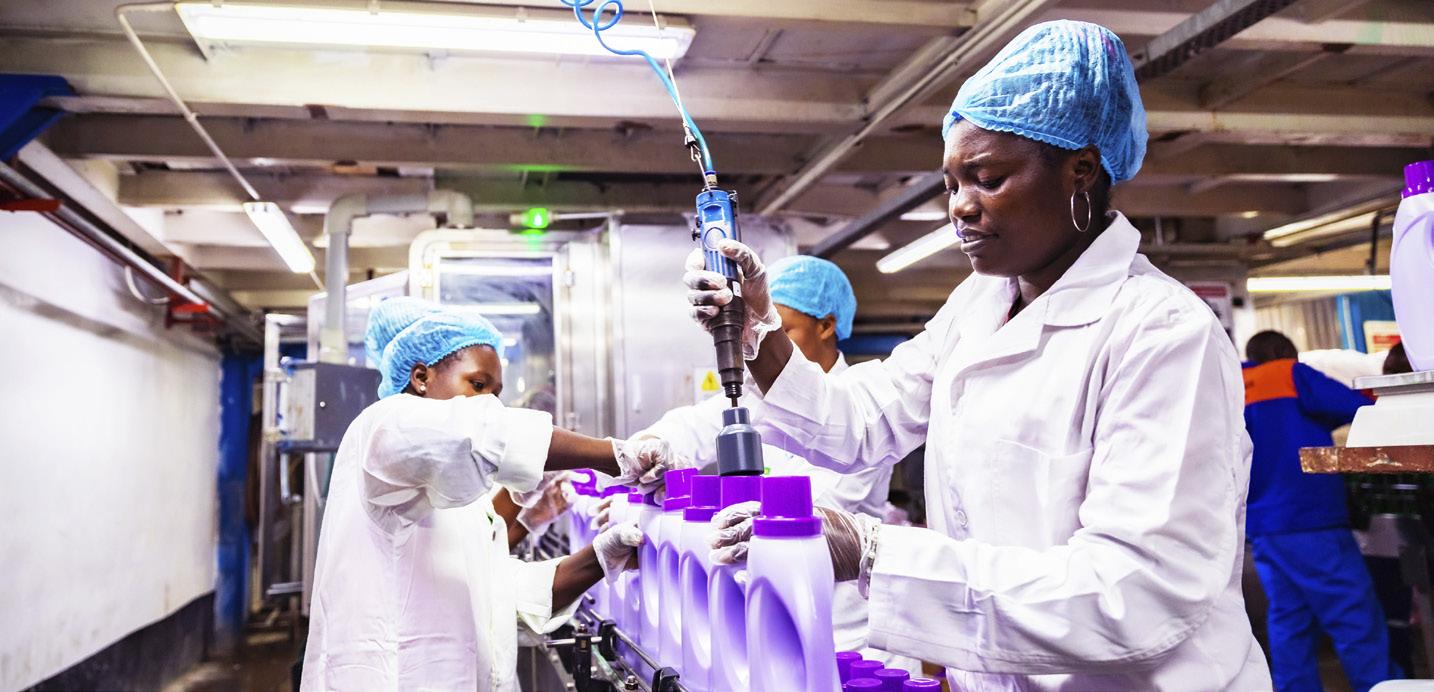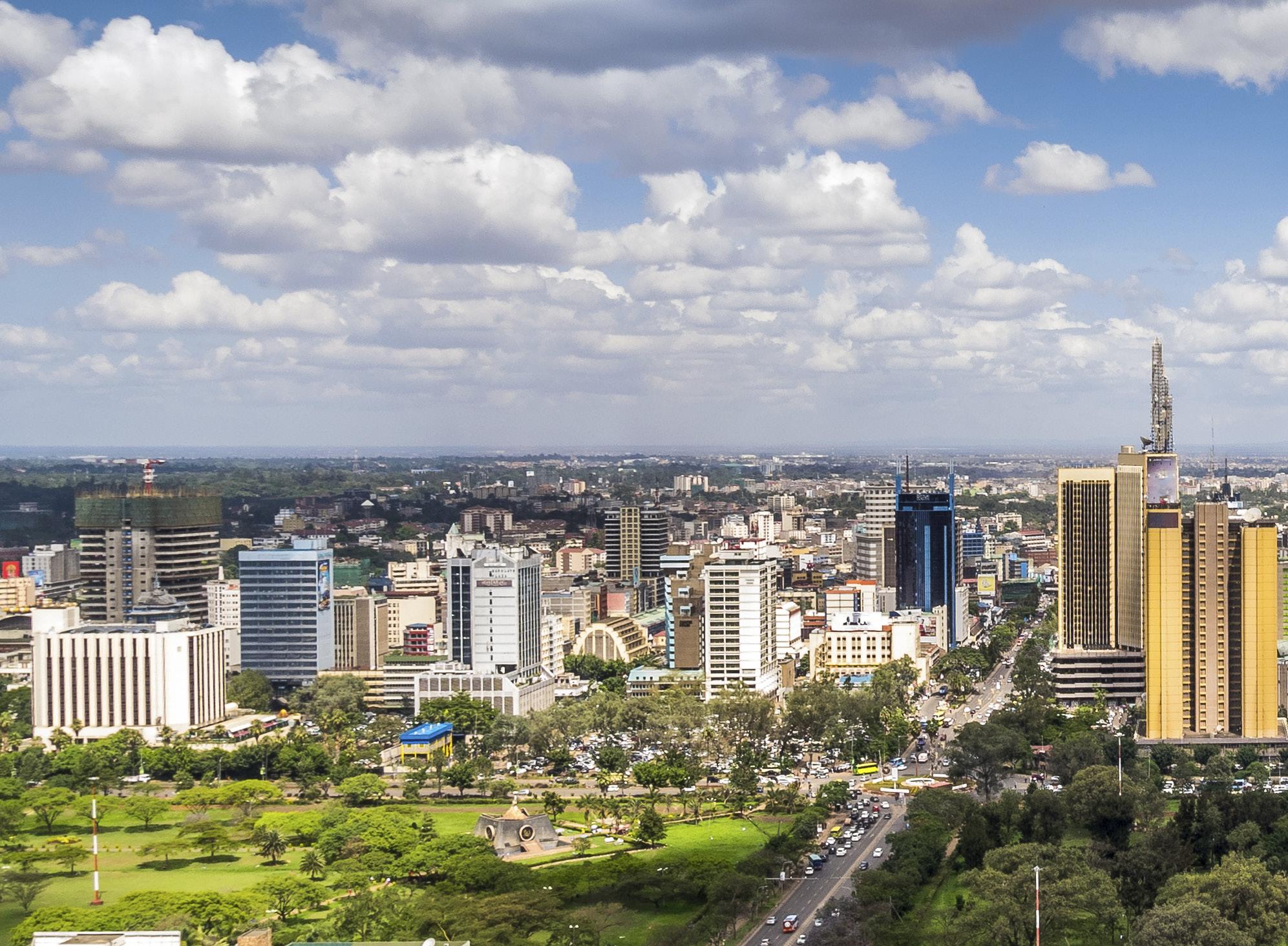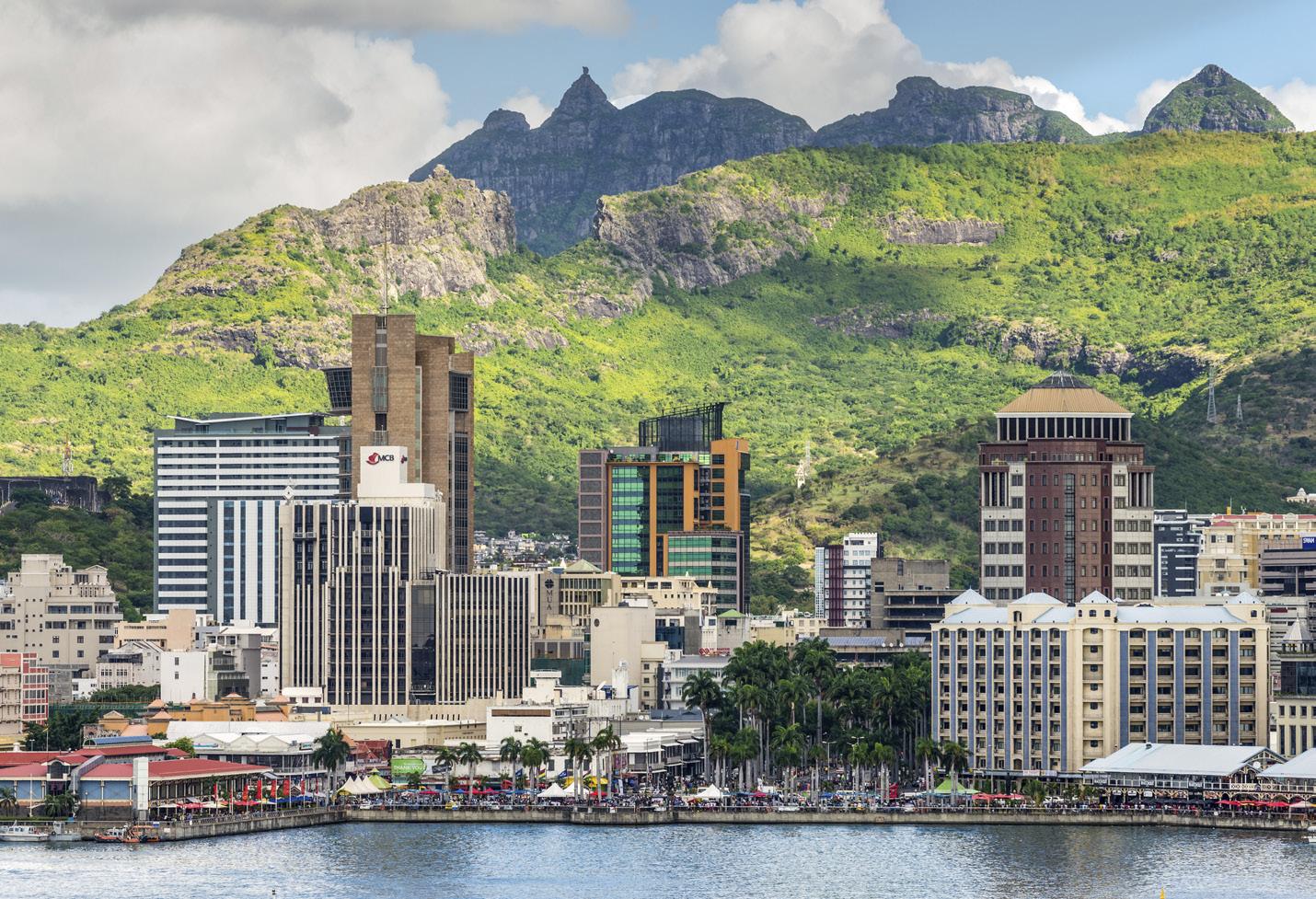OVERVIEW
Manufacturing A focus on manufacturing exports can add value. SECTOR INSIGHT Distell is expanding its African footprint.
Credit: Ethiopian Investment Commission
M
anufacturing makes up about 40% of intra-African trade but only 19% of expor ts. The Brookings Institution estimates that business-to-business spending in manufacturing in Africa could be $666.3-billion by 2030. This figure represents a $201.2-billion increase over the amount for 2015. To get even greater value for their manufactured goods, Africans must export more. The African Growth and Opportunity Act (AGOA), which gives duty-free access to the US for about 6 500 products from 39 Sub-Saharan countries, will be in place for another five years and there is a chance to ramp up production of goods of higher value to take advantage of the agreement, which has not been exploited to the extent that it might have been. Exactly how to move Africa’s economy away from agriculture into productive manufacturing is a subject of some debate. The “Vietnam Model” is based on growing the sector by offering manufacturing companies a low-wage environment as wages in China rise. Other countries to take this route include Sri Lanka and Bangladesh. Ethiopia is following this trend. A Bangladeshi garment manufacturer has set up a factory in Ethiopia which supplies H&M and a Sri Lankan company, Hela Clothing (pictured), has produced and shipped its one-millionth garment from its factory
AFRICAN BUSINESS 2021
36
in Ethiopia. TAL Apparel, a company with Hong Kong roots, had 27 000 employees in the same town in which Hela is operating, Hawassa, until Covid-19 struck. This is part of a drive by Ethiopia to increase its annual export earnings in clothing from $145-million to $30-billion (CNN). Lesotho and Mauritius are other countries exporting textiles, although the island nation chose to focus on the high-end market and has developed the skills and qualitycontrol protocols needed to supply that niche. As a colony Mauritius was a sugar-based monoculture. Today sugar cane is still in the export basket but there are also textiles, clothing, processed fish and cut flowers. Ser vices expor ts such as financial services and tourism are rising, and medical tourism and higher education are seen as a high-value sectors worth investing in. Dr Yuwa Hong and Dr Martyn Davies have argued that wage rates are just one of the “pull” factors that attract manufacturers (Sunday Times, 26 January 2020). Of the six countries referenced in their ar ticle, R wanda, Ethiopia,

















